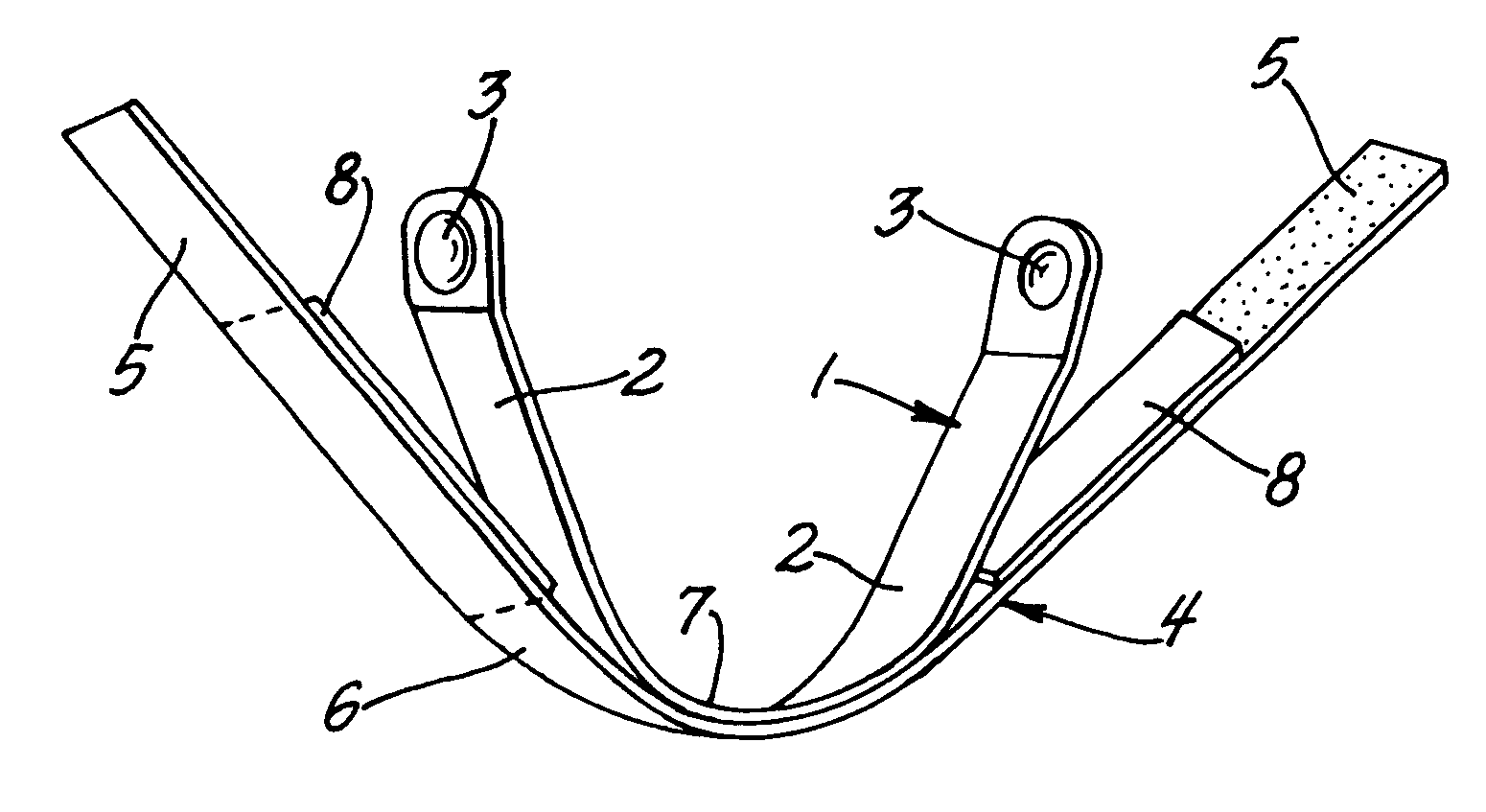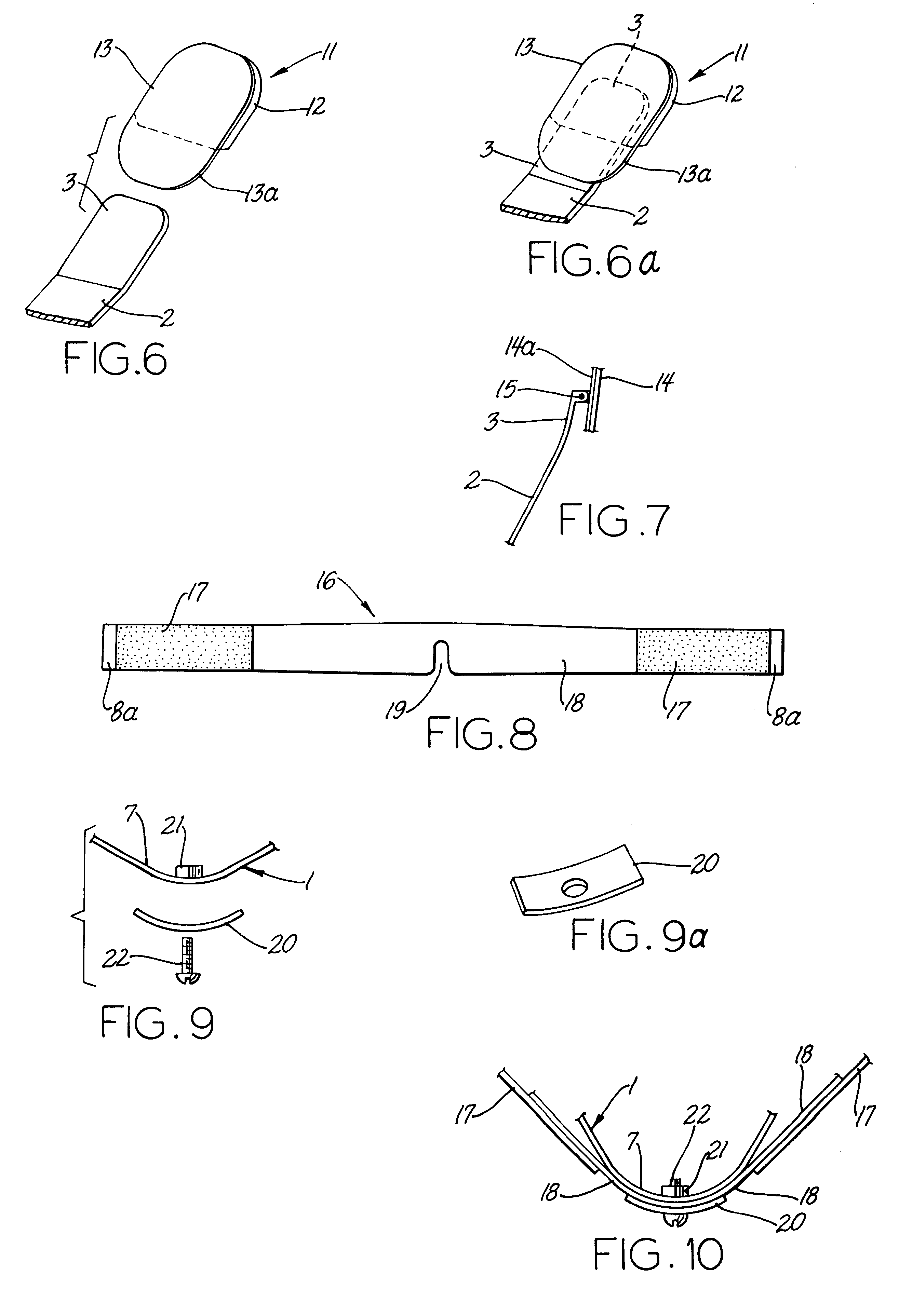Internal nasal dilator
a dilator and nasal tube technology, applied in the direction of dilators, medical devices, surgery, etc., can solve the problems of affecting the quality of sleep, and causing sleep deprivation, so as to achieve the effect of easy installation and removal, and convenient removal
- Summary
- Abstract
- Description
- Claims
- Application Information
AI Technical Summary
Benefits of technology
Problems solved by technology
Method used
Image
Examples
Embodiment Construction
The following is a discussion of the various forms of the invention illustrated herein to show how the dilator when made according to the present invention provides the benefits set forth in the objects.
In FIGS. 1 and 2 by way of illustration, the dilator of the present invention includes spreading means comprising a thin U or V-shaped spring 1 preferably made of thin flat spring material (hereinafter referred to as a UV-spring, or just "spring") having leg-portion 2 with contact-portions (or tab portions) 3 or 3a at the ends of the spring and adapted to be inserted inside the nostrils of the user free of contact with the septum to increase the nasal-openings. The UV-spring is shown with its ends apart in the free position. The contact-portions 3 in the simplest form can comprise merely rounded concave-shaped ends of the spring with a soft plastic coating, or preferably by separate thin rounded pads made of resilient material, for example, attached to contact-portions 3. The contact...
PUM
 Login to View More
Login to View More Abstract
Description
Claims
Application Information
 Login to View More
Login to View More - R&D
- Intellectual Property
- Life Sciences
- Materials
- Tech Scout
- Unparalleled Data Quality
- Higher Quality Content
- 60% Fewer Hallucinations
Browse by: Latest US Patents, China's latest patents, Technical Efficacy Thesaurus, Application Domain, Technology Topic, Popular Technical Reports.
© 2025 PatSnap. All rights reserved.Legal|Privacy policy|Modern Slavery Act Transparency Statement|Sitemap|About US| Contact US: help@patsnap.com



